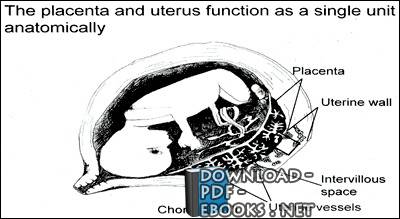📘 قراءة كتاب Obstetrics Kasr ِAl-Ainy department book fertilization implantation أونلاين


Millions of sperms are deposited into the vagina during sexual intercourse. The sperms make their way through the cervix into the uterus and then on to the fallopian tubes. As they swim along this way their numbers decline. Only a few hundred sperm will get close to the egg. During the trip, sperm prepare themselves to meet the egg by subtle alterations of their heads and movement patterns.
Once inside the fallopian tube, the sperm attracts the egg by releasing a chemical. The egg is surrounded by a protective covering called the zona pellucida, which allows only one sperm to penetrate it. Once inside the egg, the head of the fertilizing sperm releases its genetic contents, which fuses with the nucleus of the egg. Fertilisation is now complete.
Sperm are able to survive for 2-3 days within the female's reproductive tract. The length of the time that a woman's egg can be fertilized by a man's sperm ranges from 12-24 hours.
Development of fertilized egg
The fertilized egg then undergoes several divisions to form a structure called the zygote. It moves into the uterus within a period of 5-7 days and is then termed as embryo. In the uterus, the embryo implants or attaches itself and burrows into the endometrial. After implantation it secretes a hormone called human chorionic gonadotrophin (hCG) which helps maintain the pregnancy. This is the hormone analyzed in the blood/urine to detect or confirm a pregnancy.
Implantation
The fertilised egg, now known as an embryo, develops in the fallopian tube for the first three days, then travels down into the uterus. By the fifth day it will become a blastocyst, a hollow ball of cells surrounding a cyst-like cavity. The blastocyst then breaks free from its shell, or hatches, and it is ready to adhere to the surface of the endometrium. It begins to secrete human chorionic gonadotrophin (hCG), a hormone that tells the corpus luteum to continue progesterone production. A home pregnancy test will detect hCGÂ when checked after a missed period. The egg maintains its ability to be fertilised for about 12 hours after ovulation. Sperm can remain viable in the cervical mucus for 48-72 hours or more around the time leading up to ovulation.
حجم الكتاب عند التحميل : 25.1 ميجا بايت .
نوع الكتاب : pdf.
عداد القراءة:
اذا اعجبك الكتاب فضلاً اضغط على أعجبني و يمكنك تحميله من هنا:

شكرًا لمساهمتكم
شكراً لمساهمتكم معنا في الإرتقاء بمستوى المكتبة ، يمكنكم االتبليغ عن اخطاء او سوء اختيار للكتب وتصنيفها ومحتواها ، أو كتاب يُمنع نشره ، او محمي بحقوق طبع ونشر ، فضلاً قم بالتبليغ عن الكتاب المُخالف:
 قبل تحميل الكتاب ..
قبل تحميل الكتاب ..
يجب ان يتوفر لديكم برنامج تشغيل وقراءة ملفات pdf
يمكن تحميلة من هنا 'http://get.adobe.com/reader/'


 منصّة المكتبة
منصّة المكتبة